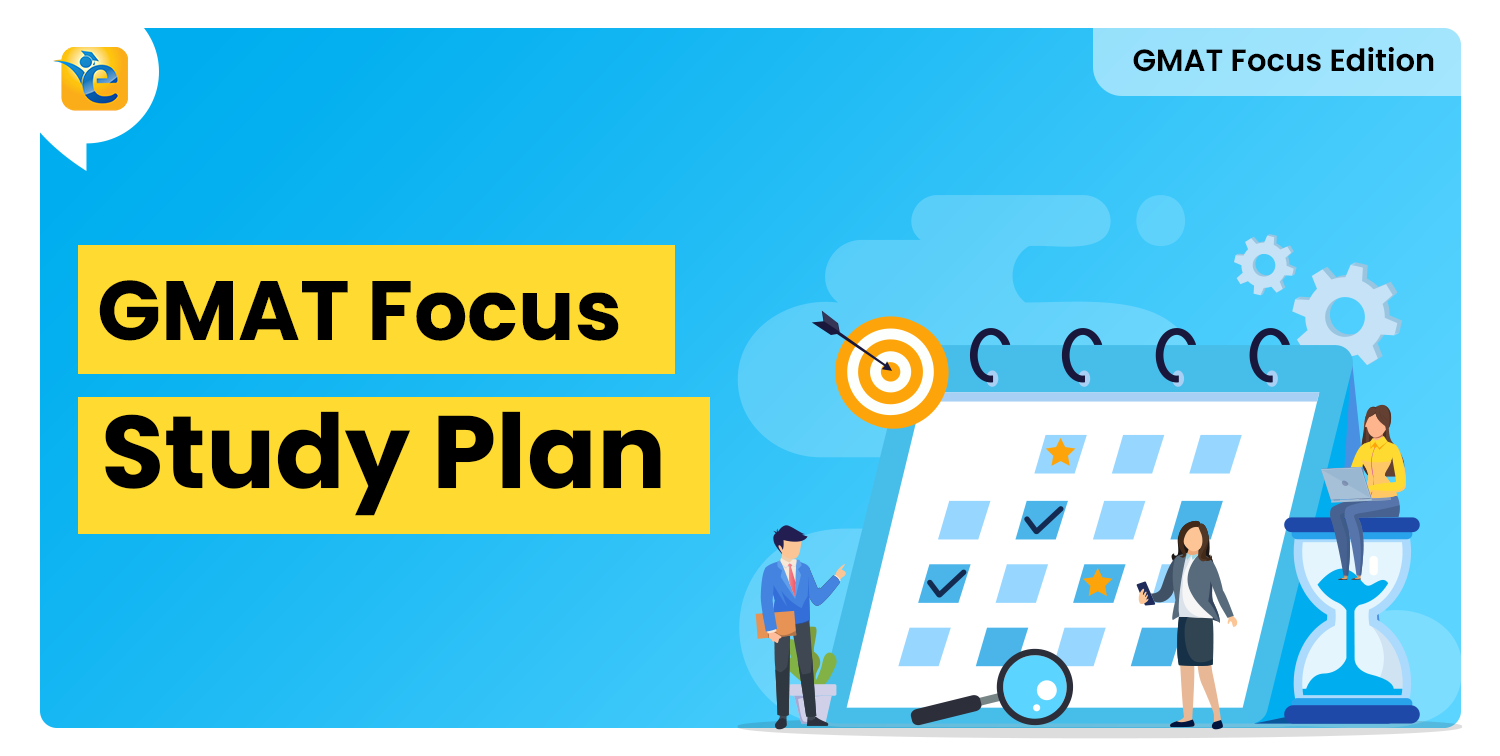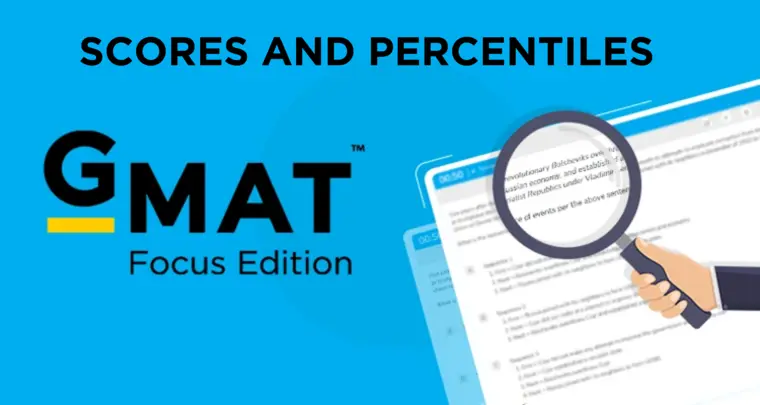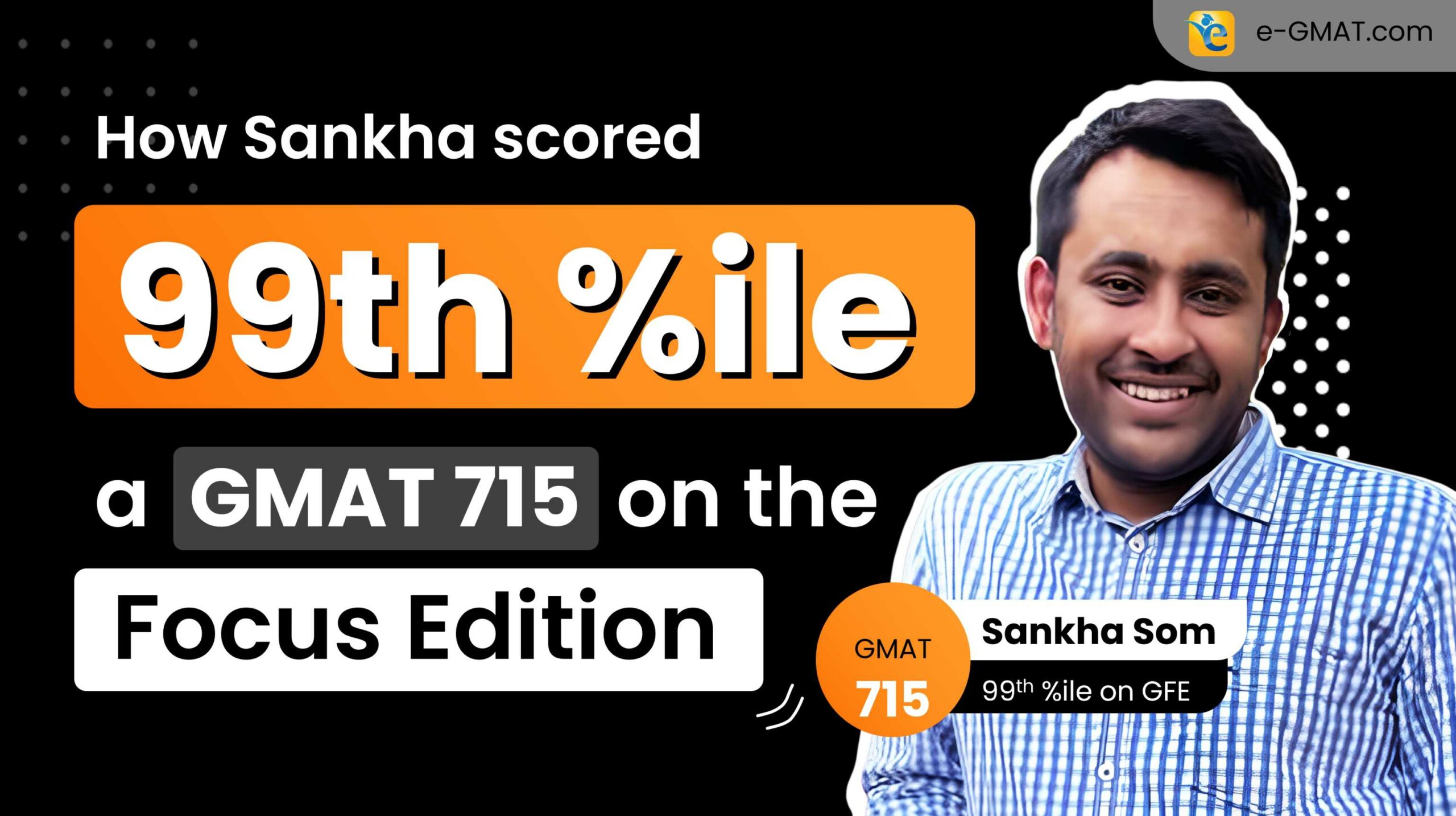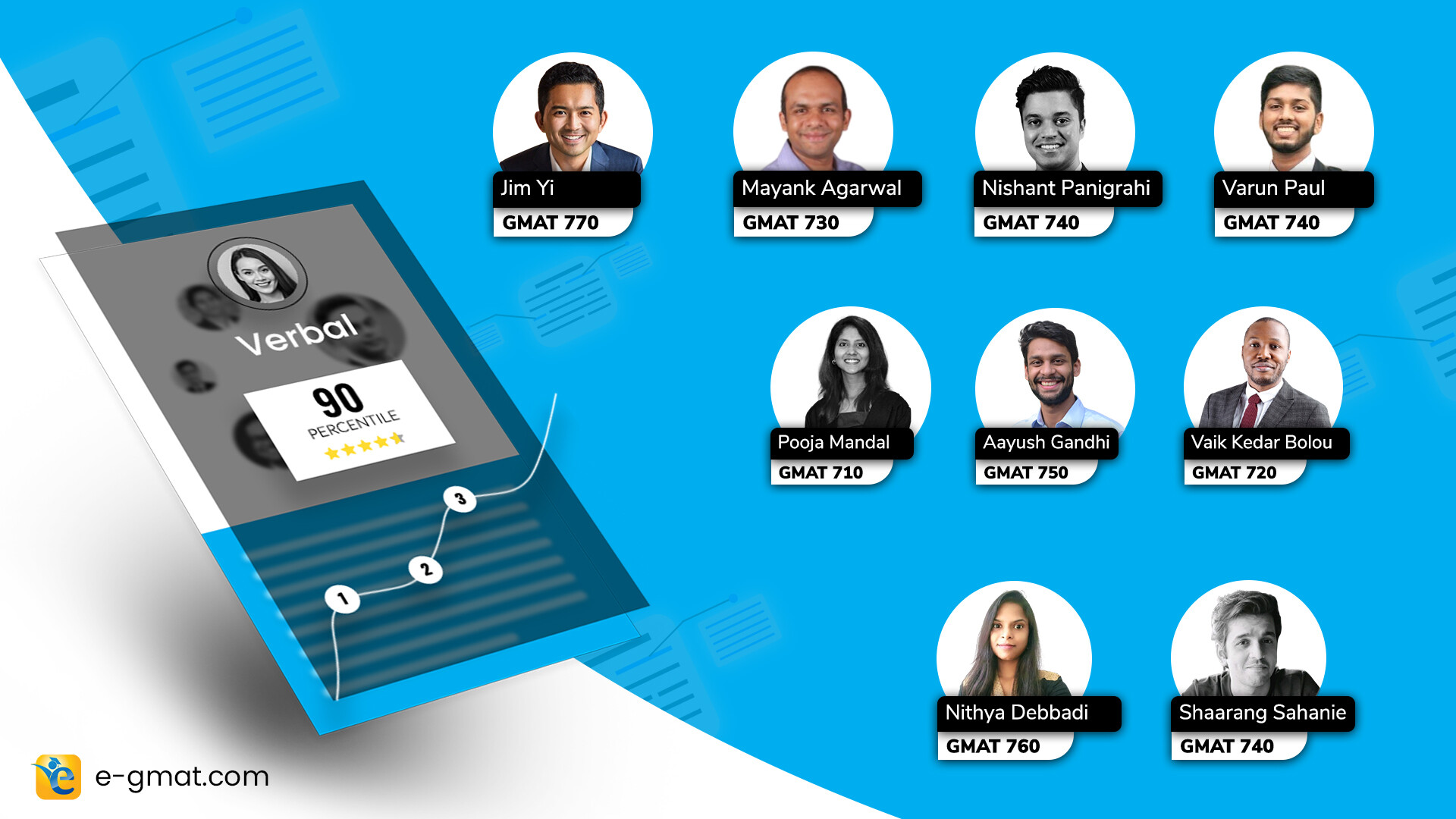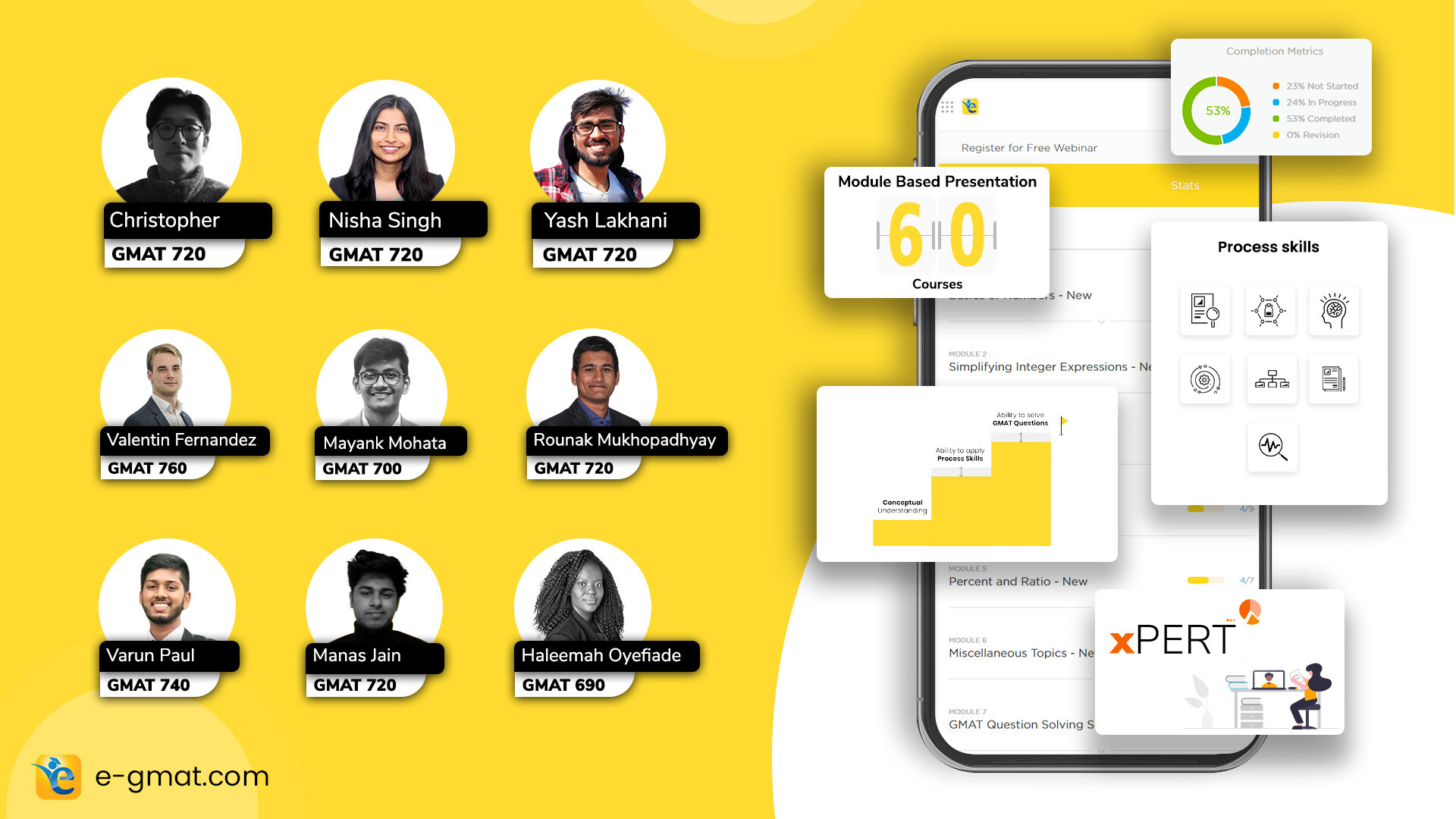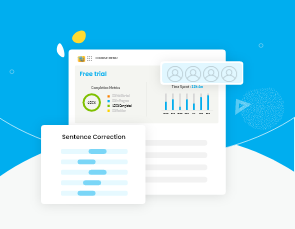Every GMAT Two-Part Analysis question tests your ability to extract precise meaning from complex arguments. But there’s one type of TPA challenge that trips even strong test-takers: identifying the correct link in a multi-step causal chain. When a passage presents a sequence like A → B → C → D, and the question asks you to identify what caused C, many test-takers instinctively look for the initial trigger (A) or the final outcome (D), missing the intermediate step (B) that the question actually requests.
This single error—confusing which link in the chain the question is asking for—accounts for why 61% of test-takers missed a recent official question on exactly this type of reasoning.
Key Takeaways from This GMAT TPA Guide:
If you’ve ever felt confident about understanding a cause-effect argument, only to discover you selected the wrong “link” in the sequence, this article will show you:
- Why test-takers jump over intermediate steps in causal chains
- How the GMAT’s table format amplifies this challenge
- The Chain Link Method – a systematic approach to avoid the trap
- Step-by-step application on both simple and complex examples
Master this method, and you’ll never again confuse the beginning, middle, and end of a causal sequence.
⭐MASTER DATA INSIGHTS SECTION
Access our comprehensive Data Insights preparation resources including Two-Part Analysis practice questions, strategic frameworks, and expert video explanations. Strengthen your approach to complex reasoning questions.
The Core Problem: Why We Jump Over Intermediate Steps
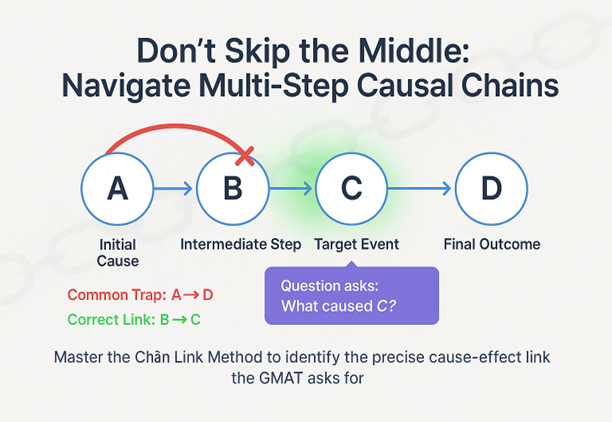
Consider this simple scenario:
“Reduced rainfall led to lower reservoir levels. Lower reservoir levels forced water rationing. Water rationing caused agricultural losses.”
If asked to identify “the cause-effect sequence that resulted in water rationing,” the correct answer is:
✅ Correct Answer:
Cause: Lower reservoir levels
Effect: Water rationing
❌ Common Mistake:
Cause: Reduced rainfall (the initial trigger)
Effect: Agricultural losses (the final outcome)
Why? Because our minds naturally gravitate toward the beginning and end of a causal story, skipping over the intermediate connections that actually answer the question.
This is the Intermediate Cause Trap, and it’s devastatingly common on the GMAT. In the official question referenced above, over 60% of test-takers selected answers that either started too early in the chain or jumped ahead to the final outcome, rather than identifying the specific cause-effect link the question requested.
How the GMAT Tests This: The Table Format Amplifies the Challenge
The GMAT’s two-part table format makes this trap even more treacherous. When you see multiple answer choices describing different events in a causal chain, your working memory struggles to:
- Track the complete sequence from the passage
- Determine which specific link the question asks for
- Eliminate options that represent the wrong link in the chain
- Select two options that form a consecutive cause-effect pair
The test exploits a predictable error: test-takers who understand the overall argument often still misidentify which step in that argument answers the question. They know A leads to B leads to C, but they select A→C when the question asked for B→C.
The Chain Link Method: Your Solution
To avoid the Intermediate Cause Trap, you need a systematic approach that forces you to identify the exact link being requested. Here’s the four-step Chain Link Method:
1. Extract the Complete Causal Sequence
Write out every step in the causal chain as you read. Don’t just understand it mentally—literally note:
Initial Cause → Intermediate Event 1 → Intermediate Event 2 → Final Outcome
2. Locate the Question’s Target
Read the question extremely carefully. Does it ask for:
- The sequence that started the chain?
- The sequence that resulted in a specific intermediate event?
- The sequence that led to the final outcome?
The wording “resulted in X” means you need to find what caused X and X itself (or what X caused, depending on the exact question wording).
3. Position Each Answer Choice
Go through each answer option and identify its position in your mapped chain:
- Is this the initial cause?
- Is this an intermediate event?
- Is this the final outcome?
- Is this not even in the chain?
4. Match the Requested Link
Select the cause-effect pair that forms consecutive steps around the target event specified in the question. The two selections must be adjacent steps in the chain—no gaps allowed.
Master TPA with Practice Questions
Ready to apply the Chain Link Method? Practice with our collection of Two-Part Analysis questions that specifically target causal reasoning challenges. Get detailed explanations and strategic approaches for each question type.
Applying the Method: Simple Example
Let’s apply the Chain Link Method to this passage:
“Hospital readmission rates have dropped by 30%. Administrators credit a new patient education program. This program ensures patients understand their discharge instructions, which has led to better medication adherence. Better medication adherence has reduced complications at home.”
Question: Identify the cause-effect sequence most strongly suggested to have resulted in better medication adherence.
Step 1: Extract the Complete Sequence
New patient education program → Better understanding of discharge instructions → Better medication adherence → Reduced complications
Step 2: Locate the Question’s Target
The question asks what “resulted in better medication adherence”—we need the link that produces medication adherence.
Step 3: Position Each Answer Choice
Suppose the options are:
- “New patient education program” (Initial cause)
- “Better understanding of discharge instructions” (Immediate cause of adherence)
- “Better medication adherence” (The target event itself)
- “Reduced complications” (Effect of adherence)
Step 4: Match the Requested Link
The link that results in medication adherence:
Cause: Better understanding of discharge instructions
Effect: Better medication adherence
Notice how we didn’t select “New patient education program” (too early) or “Reduced complications” (too late).
Advanced Application: Complex Example
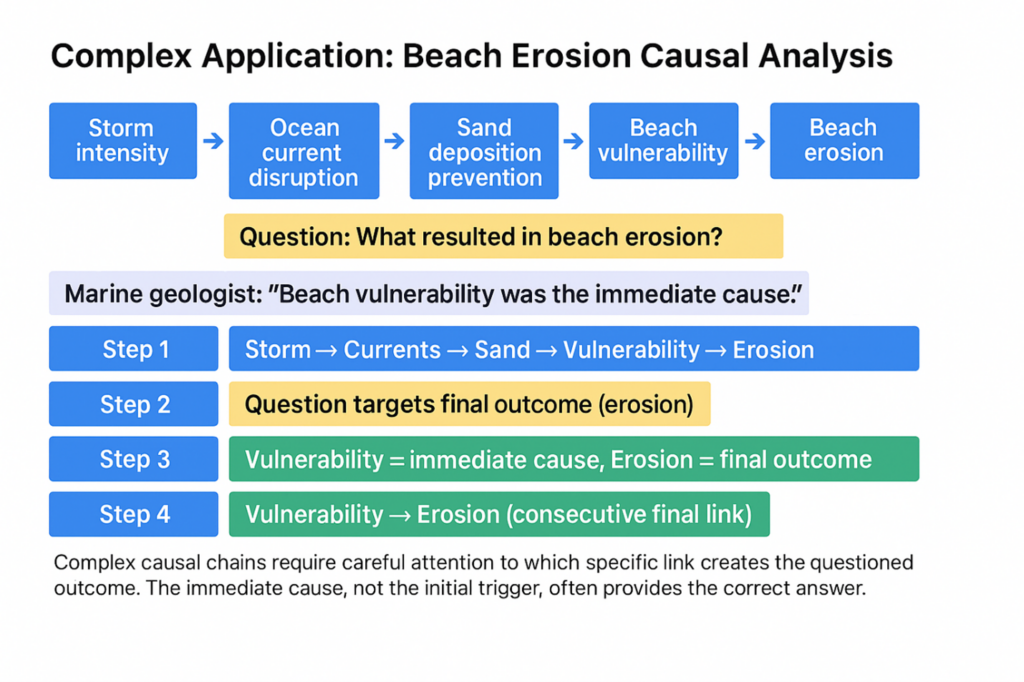
Now let’s try a more challenging passage:
“A coastal city experienced severe beach erosion last year. Environmentalists initially attributed this to increased storm intensity. However, recent analysis suggests storms were only an indirect factor. Satellite imagery revealed that the storms disrupted ocean currents, which prevented natural sand deposition along the coast. Without this natural sand replenishment, beaches became increasingly vulnerable to wave action. A marine geologist argues that this beach vulnerability—not the storms themselves—was the immediate cause of the erosion. The analysis confirms that once beaches lost their protective sand buffer, the observed erosion patterns quickly followed.”
Question: The marine geologist suggests a certain causal sequence may have brought about the beach erosion. Identify the sequence of cause and effect most strongly suggested to have resulted in the beach erosion. Make only two selections, one in each column.
Available options:
- The increased intensity of storms
- The disruption of ocean currents
- The prevention of natural sand deposition
- The vulnerability of beaches to wave action
- The observed erosion patterns
Step 1: Extract the Complete Sequence
According to the marine geologist’s analysis:
Increased storm intensity → Disruption of ocean currents → Prevention of sand deposition → Beach vulnerability → Beach erosion
Step 2: Locate the Question’s Target
“resulted in the beach erosion” – We need what directly caused the erosion and the erosion outcome itself.
Step 3: Position Each Answer Choice
- “Increased storm intensity” – Initial/indirect cause
- “Disruption of ocean currents” – First intermediate event
- “Prevention of natural sand deposition” – Second intermediate event
- “Beach vulnerability to wave action” – Immediate cause of erosion (described as “immediate cause”)
- “Observed erosion patterns” – The final outcome (the erosion itself)
Step 4: Match the Requested Link
The passage explicitly states that beach vulnerability was “the immediate cause of the erosion” and that “once beaches lost their protective sand buffer, the observed erosion patterns quickly followed.” This creates the consecutive cause-effect pair:
Cause: The vulnerability of beaches to wave action
Effect: The observed erosion patterns
⭐ Key Insight: While prevention of sand deposition was important earlier in the chain, the passage makes clear that beach vulnerability is the immediate precursor to erosion. When the question asks what “resulted in beach erosion,” we need the final link in the chain—the step that directly triggers the erosion itself.
Your Practice Plan
The Intermediate Cause Trap is avoidable once you recognize it. Here’s how to build immunity:
- On every TPA causal argument: Physically write out the complete A → B → C → D chain before looking at answer choices.
- Read the question twice: The first time for general understanding, the second time to identify exactly which link is being requested.
- Eliminate by position: If the question asks what “resulted in C,” immediately eliminate any answer choice that represents A (too early) or D (too late).
- Verify consecutiveness: Your selected cause and effect must be adjacent steps in the chain. If there’s a gap between them, you’ve made an error.
⭐ Key Takeaway: The GMAT doesn’t give you credit for understanding the overall argument. It rewards you for identifying the precise link it asks for. Master the Chain Link Method, and you’ll never again confuse the beginning, middle, and end of a causal sequence.
↗️Master All TPA Question Types
Beyond causal reasoning, Two-Part Analysis includes multiple question types that require different strategic approaches. Get comprehensive preparation with:
- ✅ Multi-Source Reasoning questions
- ✅ Table Analysis problems
- ✅ Graphics Interpretation challenges
- ✅ Strategic frameworks for each question type


